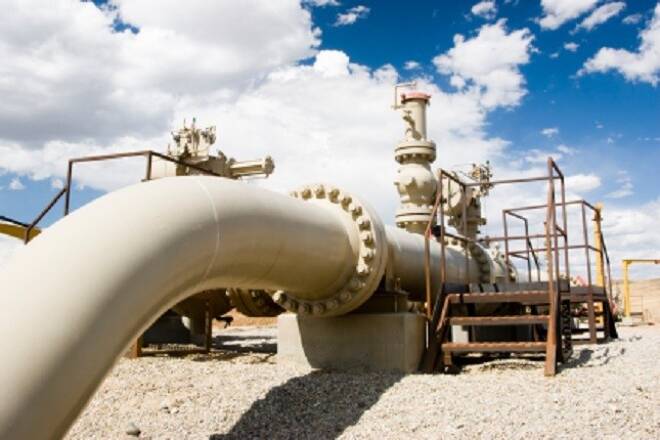Advertisement
Advertisement
Natural Gas Price Prediction – Prices Rebound Following Lower than Expected Inventory Build
By:
Natural gas prices surged 1.7%, rallying from support levels, following a smaller than expected build in natural gas inventories reported on Thursday by
Natural gas prices surged 1.7%, rallying from support levels, following a smaller than expected build in natural gas inventories reported on Thursday by the U.S. Department of Energy. The lower than expected build has flattened the trajectory of builds leaving stocks well below the average of the 5-year range. Prices have been trading on the defensive as cooler than normal weather is spreading east to west which should reduce cooling demand for natural gas during the heart of the summer season. Prices nearly hit support near an upward sloping trend line that comes in near 2.67. Resistance on natural gas prices is seen near the 10-day moving average at 2.78. Short-term momentum has turned positive as the fast stochastic generated a crossover buy signal in oversold territory. This reflects accelerating positive momentum and the reading below 20 when the crossover occurs foreshadows a rebound in natural gas prices.
Storage Levels Came in Lower than Expected
The EIA reported on Thursday that gas in storage was 2,249 Bcf as of Friday, July 13, 2018. This represents a net increase of 46 Bcf from the previous week. Expectations were for a 58 Bcf increase. Stocks were 710 Bcf less than last year at this time and 535 Bcf below the five-year average of 2,784 Bcf. At 2,249 Bcf, total working gas is within the five-year historical range.
California prices increased
The price at SoCal Citygate increased $1.16 from $3.44/MMBtu last Wednesday to $4.60/MMBtu yesterday. Prices on July 5 reached $8.28/MMBtu in anticipation of record-high temperatures in Southern California. The California Border Average price increased $1.00 from $2.54/MMBtu last Wednesday to $3.54/MMBtu.
North East Weather Cooled
Temperatures in the Northeast were lower this report week following unseasonably high temperatures the previous report week, which reduced the need for air conditioning. According to the S&P Global Platts Northeast Observer, average power demand for the report week decreased 14% from last report week.
About the Author
David Beckerauthor
David Becker focuses his attention on various consulting and portfolio management activities at Fortuity LLC, where he currently provides oversight for a multimillion-dollar portfolio consisting of commodities, debt, equities, real estate, and more.
Did you find this article useful?
Latest news and analysis
Advertisement
